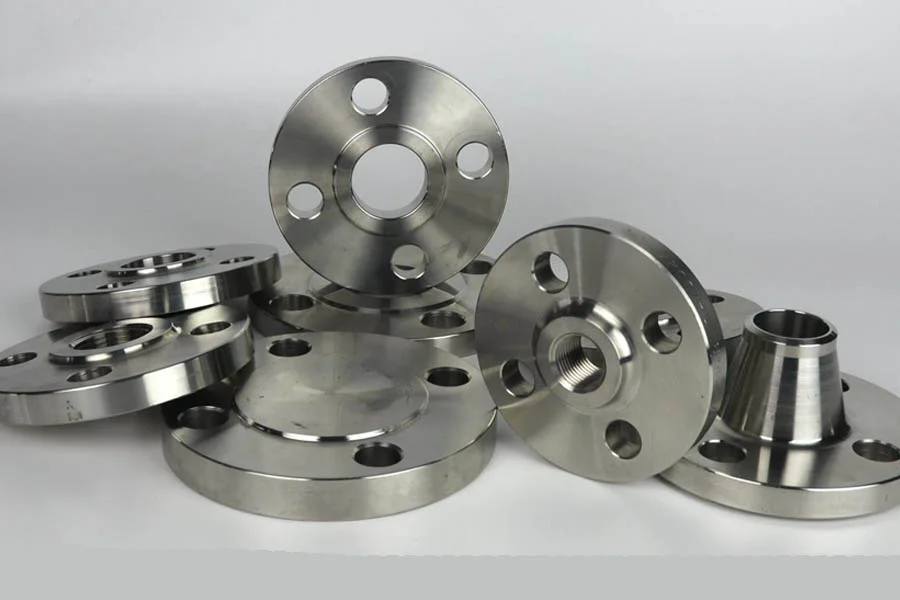Weld Neck Flanges
Weld neck flanges are designed for butt welding to piping systems, ideal for high-stress applications due to their long neck, which distributes stress from the pipe to the flange. Their bore aligns with the pipe’s bore, minimizing turbulence and erosion.
These flanges, though costly due to their robust construction, provide critical reinforcement in demanding environments. They are widely used in industries like oil and gas, petrochemicals, and power generation for secure and reliable connections.

Weld neck flanges are engineered for high-performance piping systems, featuring a long neck or hub that transfers stress from the weld to the flange base, reinforcing the connection. Butt welded to the pipe, they ensure a smooth bore alignment, reducing flow turbulence and erosion. Their design makes them suitable for extreme conditions, high pressure, and temperature fluctuations, ensuring long-term reliability in critical applications.
Weld neck flanges are manufactured to meet stringent industry standards, ensuring compatibility and performance in various piping systems.
| Grade/Standard | Equivalent | Application |
|---|---|---|
| ASTM A105, ANSI B16.5 | Carbon steel | Oil and gas, general piping |
| ASTM A182 F304/F316 | Stainless steel | Chemical processing, marine |
| ASTM A350 LF2 | Low-temperature carbon steel | Cryogenic pipelines |
Weld neck flanges are essential in industries requiring robust and reliable piping connections:
| Properties | Values & Limits |
|---|---|
| Material | Carbon Steel, Stainless Steel, Alloy Steel |
| Standards | ASME B16.5, ANSI B16.47, MSS-SP-44 |
| Connection | Butt-Weld |
| Size Range | 1/2" to 24" (Standard), up to 60" (Custom) |
| Pressure Rating | 150#, 300#, 600#, 900#, 1500#, 2500# |